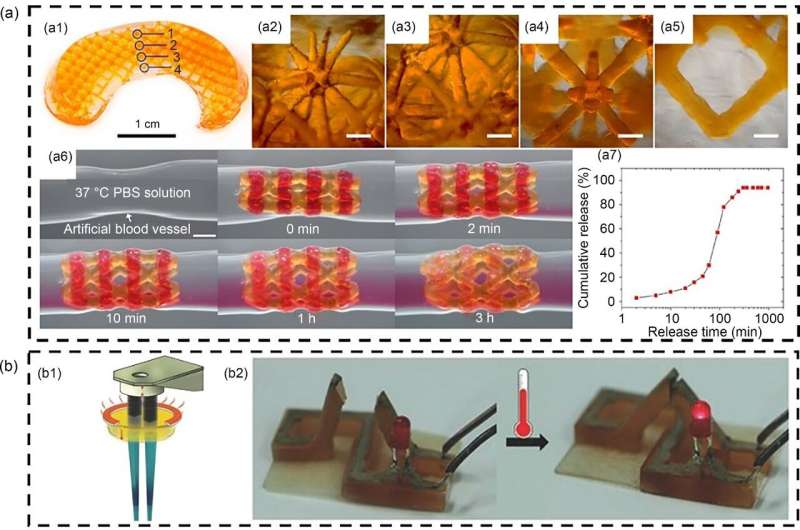This article has been reviewed according to Science X's editorial process and policies. Editors have highlighted the following attributes while ensuring the content's credibility:
fact-checked
trusted source
proofread
From lab to life: 3D bioprinting unveils new horizons in biomedical applications

With the development of intelligent biomedical engineering, the application of three-dimensional (3D) printing technology has become increasingly widespread. However, existing 3D printing technologies mainly focus on inorganic or polymer materials, limiting their applications in biocompatibility and biodegradability. Due to these challenges, there is a need for in-depth research on biocompatible and functional materials.
This review, conducted by institutions such as China University of Petroleum (East China), Zhejiang University, and Tel Aviv University, was published in Bio-Design and Manufacturing, on 29 April 2024. The research team explored the combination of peptide self-assembly technology with 3D printing for developing complex biological structures and organs. This breakthrough lays the foundation for future biomedical applications.
The study provides an in-depth analysis of recent progress in 3D bioprinting in Israel, focusing on scientific studies on printable components, soft devices, and tissue engineering. It highlights the potential of peptide self-assembly technology as a bioinspired ink for constructing complex 3D structures.
Peptide self-assembled bio-inks form various nanostructures, such as nanofibers and nanotubes, through non-covalent interactions like hydrogen bonding, aromatic, and hydrophobic interactions, creating a 3D network structure. These structures exhibit excellent biocompatibility and adjustable physicochemical properties, making them suitable for multiple biomedical fields, including tissue engineering, cell culture, and drug release.
Israeli scientists have made significant achievements in developing these innovative materials and successfully applying them in bioprinting and manufacturing commercial products.
Dr. Lihi Adler-Abramovich, a leading researcher from Tel Aviv University, states, "The integration of peptide self-assembly with 3D printing represents a significant advancement in biomedical engineering. This technology not only enhances the precision and efficiency of creating biocompatible structures but also opens up new possibilities for developing sophisticated medical devices and tissue engineering solutions."
The study's breakthroughs in 3D bioprinting have vast applications, combining peptide self-assembly and 3D printing to create precise, biocompatible medical devices and tissue engineering products. These innovations impact regenerative medicine, personalized health care, and drug delivery, presenting new bio-manufacturing opportunities and reinforcing Israel's global leadership in 3D bioprinting.
More information: Lujing Gao et al, Innovation leading development: a glimpse into three-dimensional bioprinting in Israel, Bio-Design and Manufacturing (2024). DOI: 10.1007/s42242-024-00275-5
Provided by Chinese Academy of Sciences




















